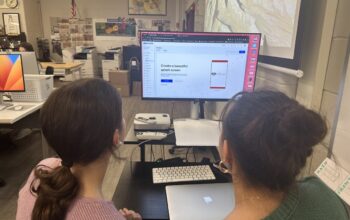Alex Hutchins, Opinions Editor
@aHutchCourant

Physical education, P.E., gym class, whatever you call it we have all been through it. And if you’ve taken it at the high school, you are probably aware that the way it’s structured in grades 9-12 is very different from how it was in grades K-8. Back in the day, which was a Wednesday, gym class was something I looked forward to on a daily basis. Why, you may ask? Well, for one my 7-11 year-old self had an insane amount of energy, a type of exuberance that can only sometimes be mirrored today if I directly inject caffeine into my bloodstream. But more importantly, gym class was far more full of life and willing to take risks than my current high school physical education has offered.
To be fair, it is not much of a surprise that gym class has transformed into something that is rarely nothing more than a study hall or a humdrum playing of a number of mainstream sports. High school students may just not be interested, refuse to work up a sweat(which I can understand completely), or simply need to finish that math homework that may have lost out to a few episodes of House of Cards the night before. With more work to do, less energy to participate, or simply a loss of interest in the class that at one time trumped all other classes, there’s really no reason for physical education teachers to spend exorbitant amounts of time attempting to capture the attention of a bunch of over-worked teenagers, even just for a moment. However it has to be said that most gym teachers do invest a large amount of time and energy into their classes. They’re not the problem. The problem stems from an acceptance that gym class will never extend beyond a 48 minute period of state-mandated physical activity. Among these requirements laid out by the Connecticut State Department of Education’s Guidelines for a Coordinated Approach to School Health are to “provide authentic and meaningful formative and overall assessment”, “incorporate scientific principles and movement concepts into classroom instruction” and even “conduct developmentally appropriate student assessments that are relevant and meaningful to the learning opportunities provided” (sounds interesting, no?).
In my opinion, the way to make gym class reclaim the intrigue of its past is to branch out from solely mainstream gym class sports(e.g. volleyball, badminton, basketball and yes, even soccer). Where are the games that could only be made up within the walls of a gymnasium like Project Adventure, Snowball Castle, Pindomonium, Capture the Flag, and a number of other off the beaten path activities? While gym teachers have certainly made a valiant effort to expand the domain of games in gym class(just look at archery or can jam for evidence of that), far too often gym seems to lack the spark that characterized the class of my youth.
So why not add some spice to the gym class recipe? Why not play games that break the mold of stereotypical physical education activities? For instance, participating in sports that aren’t traditionally American might add another dimension of interest to gym class. Learning games from other countries like sepak takraw(or volleyball using your feet) not only stray from the norm of gym class activities but also provide insights into the world of other nations cultures and interests. While I may not be traveling to Southeast Asia any time soon(where sepak takraw hails from), simply knowing about these games is certainly an intriguing prospect.
In the end, how we approach physical education is dependant on personal preference. While there is certainly a belief that gym class has little relevance in high school, shouldn’t be required for people who play sports, or should be non-existent in the second half of students’ senior year, the reality is gym doesn’t need to be the nuisance of a class that it’s sometimes made out to be.



